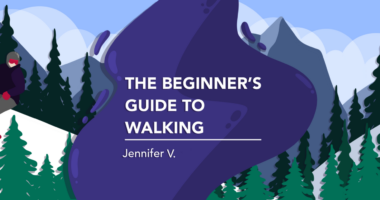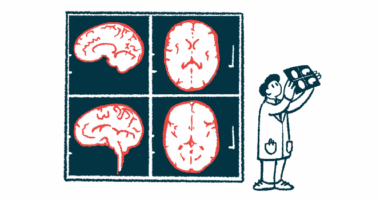Turn Up the Volume, but Only Until It Hurts: My NMOSD Diagnosis Story

olegganko/Shutterstock
I will always love the feeling of a good bass line, the way the sound escapes concert speakers and vibrates through my entire body. It’s poetic justice that this feeling can now trigger painful spasms, a symptom of neuromyelitis optica spectrum disorder (NMOSD).
My husband (then fiancé) and I had attended an intimate concert, in the front row, with one of my favorite bands, Keane, just days before my first major attack. Lead singer Tom Chaplin high-fived me. The night before my attack, we attended a swanky and loud film festival party. The next morning, as I walked from the subway station to my office, half asleep because of another late night out, I knew something was off. My legs felt heavy, foreign almost. As the day progressed, I lied to myself.
“I’m just tired.”
“I’ve been logging extra hours at work.”
“I didn’t sleep well last night.”
But by dinnertime, I was in the emergency room, carried in by my soon-to-be life partner. I was paralyzed from the bra line down. After a long night of tests, a team of doctors told me I had suffered a transverse myelitis attack, except they had no idea why. I think I was too angry at my body to be scared.
My week as an inpatient was a blur. Forty-three of my friends visited; I kept count as a way to distract myself. My future sister-in-law showed up every morning. She let me cry, fixed my makeup, and brushed my hair before visitors appeared.
One day, I peed myself in front of my future mother-in-law, and the next day she quietly left me a package of Depends. My cousins wheeled me down to the lobby and snuck my dog in for a cuddle. Then, a fellow specializing in neurology told me I’d never walk again.
This is the part I find most uncomfortable. I was a career-driven, motivated young woman in her mid-20s. I was months away from marrying the man of my dreams. We planned to travel the world, buy a bigger home, and start a family.
While doctors were performing a spinal tap at my hospital bed, my cellphone rang. I was asked not to move, but I insisted they give me my phone, only to hear a cheerful voice from the bridal shop. “Your gown has arrived from Spain!” The doctors thought I had burst into tears from the pain. But I felt nothing physically.
It was in that instant that I had no idea who I was anymore. Neither did anyone else.
I could see looks of shock, worry, and sadness on the faces of those who came to cheer me up. The guilt was the hardest element for me to handle.
Here’s something I’ve never told anyone until now.
On my fourth night in the hospital, I couldn’t sleep. So, I struggled into my wheelchair and wheeled down the dimly lit hospital hallway. All I heard was the beeping and buzzing of monitors and the quiet humming of another patient. Music has always motivated me, and there’s a soundtrack for every good, bad, and ugly moment in my life. The man’s joyful song pulled me in his direction. He sat in a wheelchair just outside his room. Suddenly, the physiotherapy room caught my attention. The metal bars shone in the darkness, and I found the courage to wheel into the room.
I’m not sure how long I fought with myself to take those first steps, but it was long enough for the nursing staff to be upset when they couldn’t locate me. They wheeled my exhausted body back to my room, confused by the big, triumphant smile on my face. As we passed the still humming gentleman, he stopped long enough to nod at me, as if to say that he knew all along I had it in me to keep fighting. I wish I knew what song he was humming that night.
Three months later, when I suffered a major optic neuritis attack, I was finally diagnosed with NMOSD. My bloodwork, which was sent from Toronto to the Mayo Clinic in the U.S., confirmed the diagnosis. By then, I was walking again, though with some difficulty. I walked slowly at first with a walker, then a cane, and eventually I returned to my high heels.
It has been 12 years since that first hospitalization. While I wish I didn’t have NMOSD, I like to stay busy, so I don’t have time to think about it. I’m like everyone else, struggling to find balance between work, parenting, friends, family, and fun — except my health likes to throw in frustrating curveballs. Yet, in all those moments I’m grateful, because I’m here and able to share “The Beginner’s Guide to Walking.”
***
Note: Neuromyelitis News is strictly a news and information website about the disease. It does not provide medical advice, diagnosis, or treatment. This content is not intended to be a substitute for professional medical advice, diagnosis, or treatment. Always seek the advice of your physician or other qualified health providers with any questions you may have regarding a medical condition. Never disregard professional medical advice or delay in seeking it because of something you have read on this website. The opinions expressed in this column are not those of Neuromyelitis News, or its parent company, Bionews, and are intended to spark discussion about issues pertaining to neuromyelitis optica spectrum disorder (NMOSD).







Lelainia Lloyd
Congratulations on your first column Jenna! Well done!
Jennifer V.
Thank you, Lelainia. It feels great to share my journey with our readers.